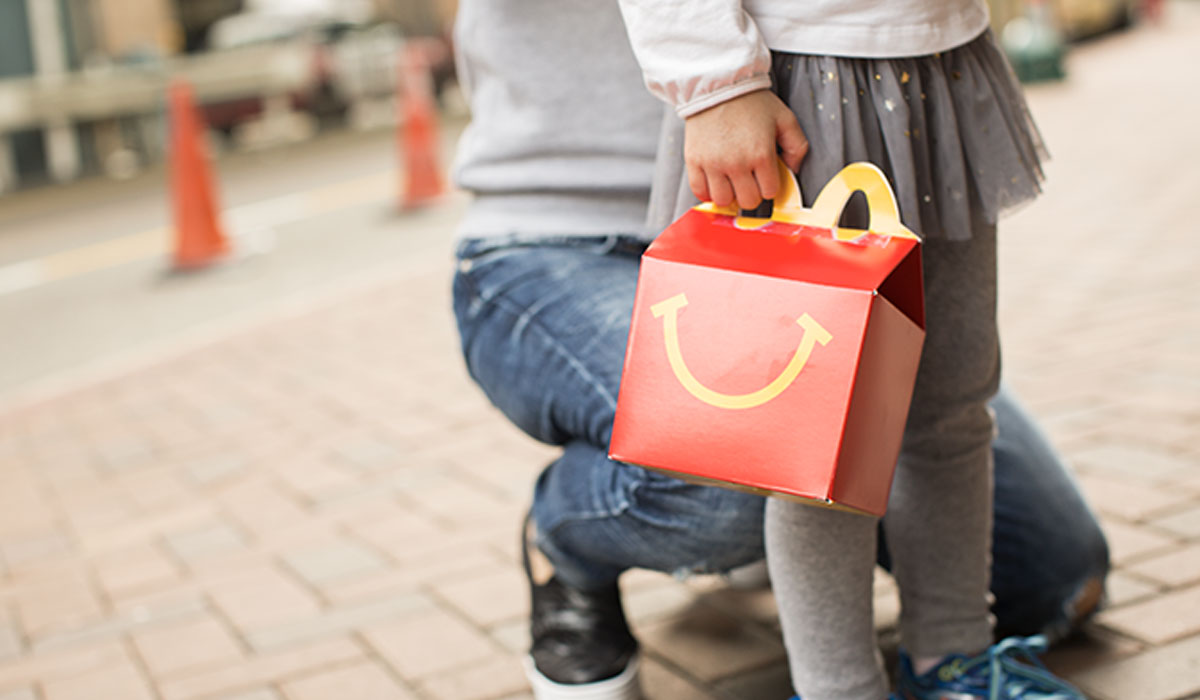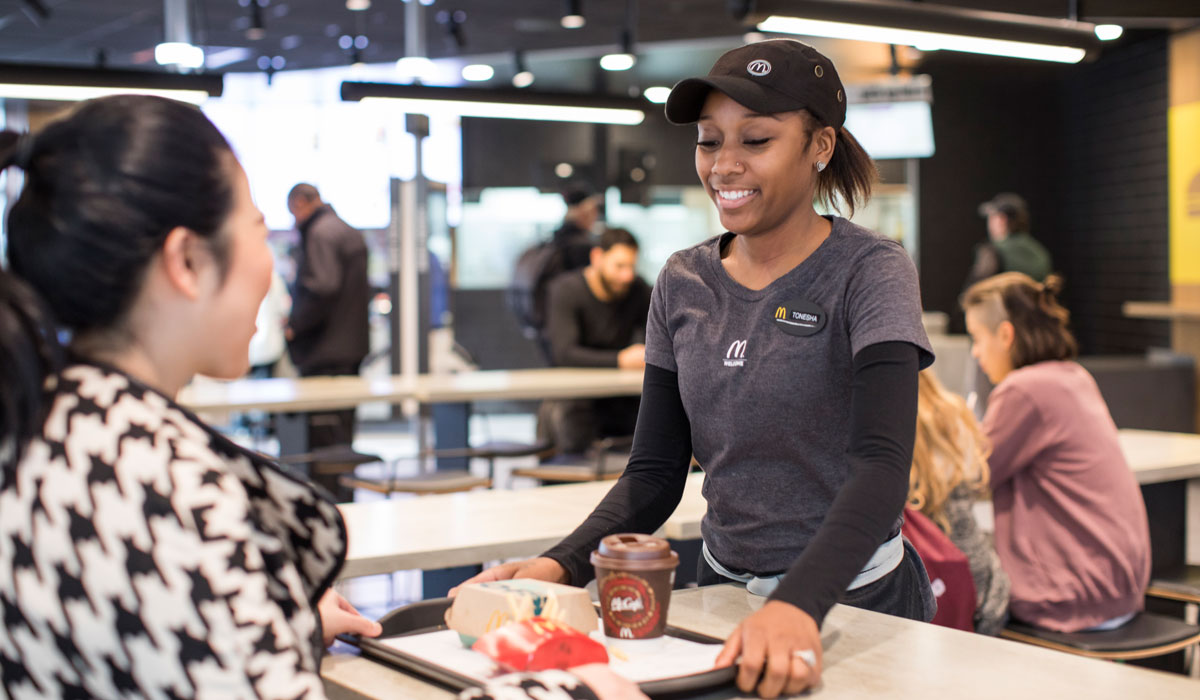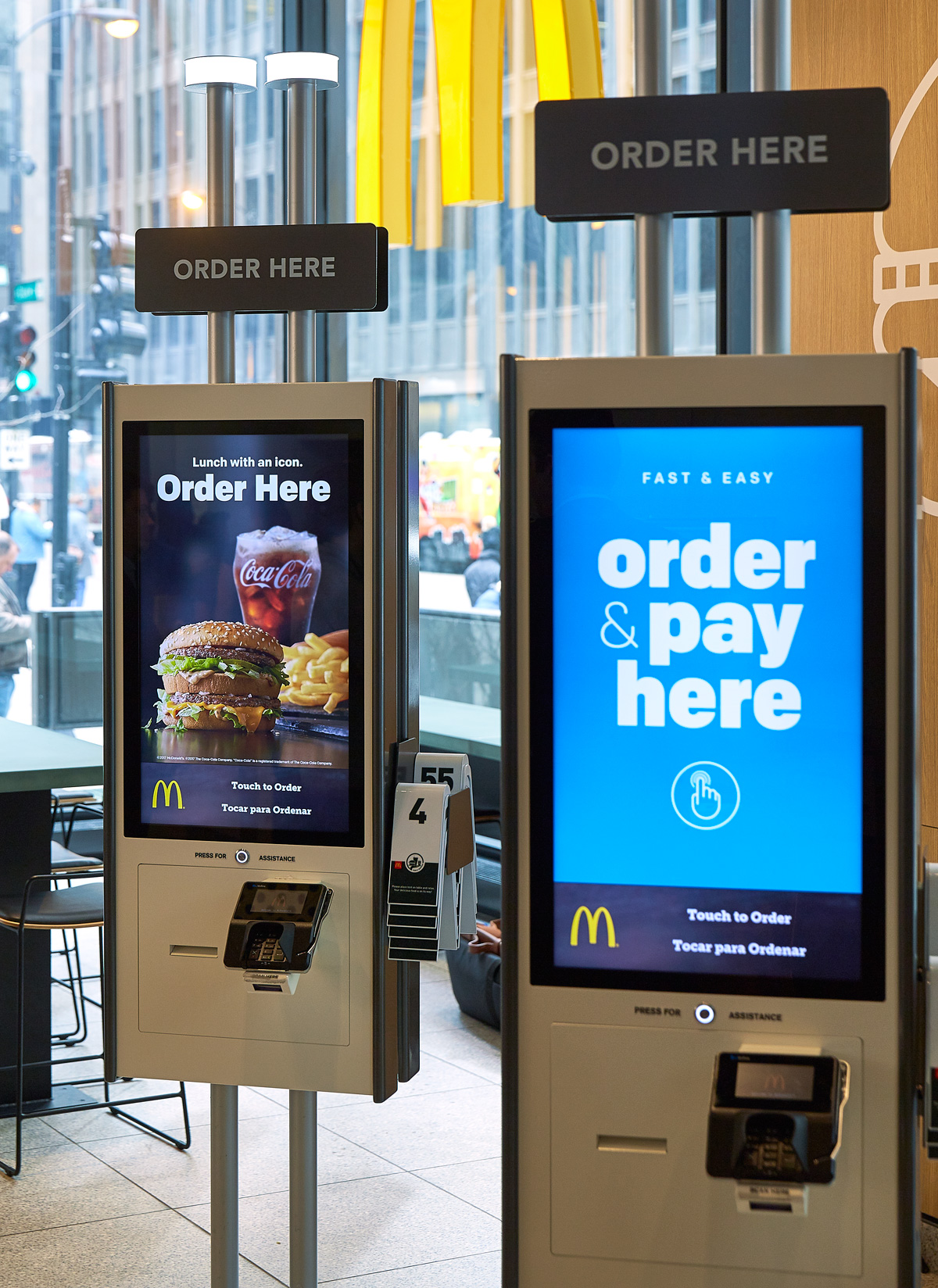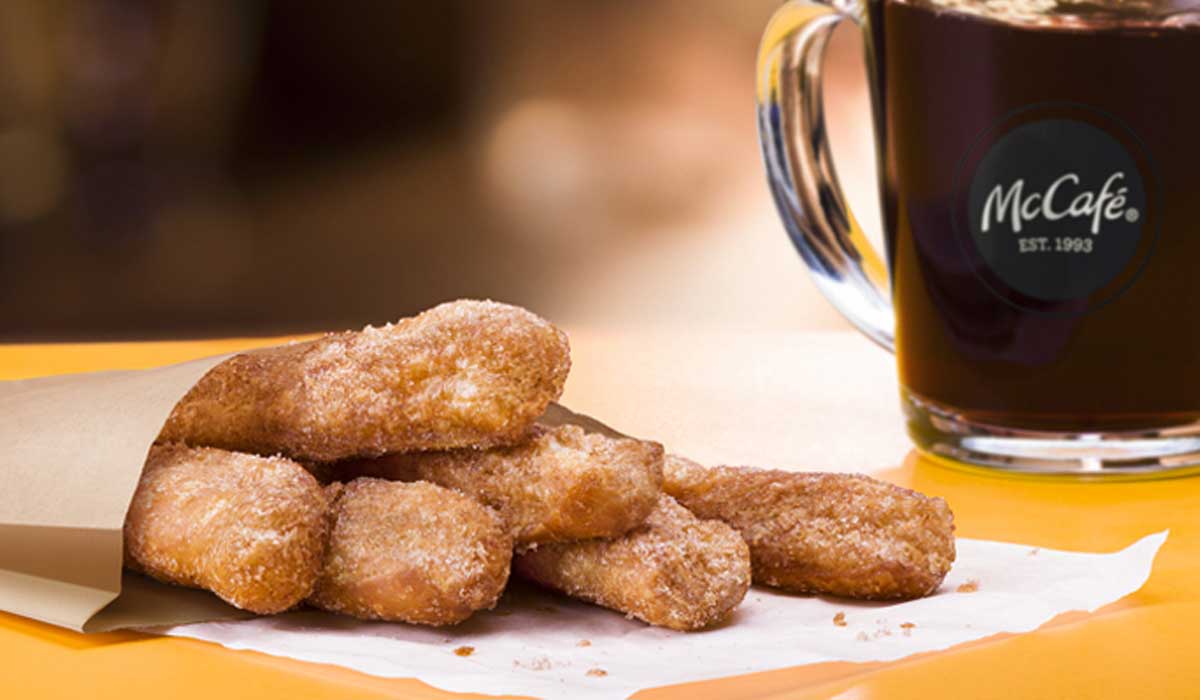When McDonald’s introduced the $1 $2 $3 Dollar Menu in January 2018, it signaled a shift in the company’s value strategy. Instead of local value, the platform pushed a national message. While the tiered structure worked in some ways, such as lifting average check, it didn’t quite succeed in others. It caused some friction between the world’s top-earning restaurant chain and its franchisees—a base that continues to expand as refranchising efforts heat up. McDonald’s is currently about 94 percent franchised in the U.S. It’s seen the proportion of company-owned restaurants fall to roughly 6 percent from 15 percent in 2015.
READ MORE: Can McDonald’s reignite its U.S. traffic?
What was the biggest source of contention? That might vary by operator but a clear issue emerged: McDonald’s needed to strike a balance between its national and local value promotions.
Speaking at the J.P. Morgan Gaming, Lodging, Restaurant & Leisure Management Access Forum on March 15, McDonald’s CFO Kevin Ozan admitted, “there are certain things that are better off being marketed on a local basis.”
Breakfast, for example, has proved to be one of the most challenging dayparts for McDonald’s in recent months. Given it represents about 25 percent of sales, flipping the traffic tide is essential if McDonald’s wants to sustain top-line momentum from something other than higher check. Ozan said marketing played a role in the drop off. “If you think about what they eat for breakfast in the Northeast of the country versus the Southwest of the country, it’s very different,” he said.
“The franchisees were strong believers that certain aspects of value need to be driven locally,” Ozan said. “And through our discussions, fair enough, I think they were right on that. And so we have moved some of that back to local.”
McDonald’s determined that certain dayparts, breakfast especially, needed local messaging to compete with independents and other quick-serves on a market-to-market basis, and to win with value against those smaller restaurants that don’t have the scale to fight with price. The chain is also offering more autonomy to operators on which products fit into those tiers, “because various cities have different cost structures.”

The change will look like this: Each co-op in McDonald’s system is required to have a $1 any size drink and $2 small McCafe drink. The rest, however, will now effectively be up to local co-ops to determine at the ground level what works and what doesn’t when it comes to value. They still have to offer products at the $1 $2 $3 tiers, but there will be different items depending on where you are throughout the country.
Ozan said some of these changes have taken place already while others are in the midst of updating.
What is the menu achieving?
Industry pundits probably didn’t expect this, but McDonald’s $1 $2 $3 Dollar Menu actually lifted average order size. What ended up happening, Ozan said, is many customers ordered their typical meal and then used the value offering to pick an add-on item. McDonald’s found that transactions with any product from the Dollar Menu actually produced higher check than those without.
If you look at this past year, on the U.S. side, comparable guest counts (transactions at restaurants open for at least 13 months) dropped 2.2 percent compared to a 1 percent uptick in 2017. McDonald’s reported positive traffic in each of its geographic segments outside of the U.S. Same-store sales in Q4 rose 2.3 percent stateside, “driven by growth in average check resulting from both product mix shifts and menu prices increases.” Customers paid 4.7 percent more in 2018 for their orders than 2017. This was due to a few changes, including deals like the 2 for $5 and 4 for $6 rollout.
Ozan said these kinds of promotions lift core product buys, even when they’re not part of the deal. And they’re going to anchor the $1 $2 $3 Dollar Menu changes in 2019.
McDonald’s menu and promotions will be designed with a national framework, Ozan said, but now executed at the local level. At the same time, it will pulse “a few times a year” national deals like the 2 for $5 that will help the brand strike a balance between local and national that’s been missing over the past year.
For McDonald’s, the goal will be to grow traffic and ticket, and boost franchisee profitably, Ozan said. The chain’s overarching strategy—the Velocity Growth plan—is built on increasing guest count. “So ultimately, all of this has to drive traffic in the long term. But some of these do drive average check in the near term that does help operator cash flow on a near-term basis,” he said.
John Ivankoe, managing director of J.P. Morgan Chase & Co., who hosted the Q&A with Ozan, pointed out that, typically, franchisees would be pleased with same-store sales driven by higher tickets. Normally, they “would really be up in arms,” he said, if traffic was positive and ticket was flat (again, McDonald’s mixed traffic and ticket negative 2.2 percent and positive 4.7 percent, respectively. So it did the opposite).
“At some point, you got to be in that game. It may cost a little but more, but if you’re not in there, you’re losing a whole new group of customers.” — McDonald’s CFO Kevin Ozan on delivery.
Ozan said, historically, the notion rings true. But these are changing times for restaurants. In the past, chains probably needed a 2–3 percent comp in a normal inflationary environment to be able to stay flat on margins and cash flow, and perhaps even grow a bit. Yet labor costs continue to rise. Wage increases have outpaced normal inflations, which disrupts everything about the equation as we know it.
“I think, between breakfast and the fact that less people eating out, that original algorithm of, ‘If you get check, you should be able to grow cash flow,’ is more under stress these days,” Ozan said.
READ MORE: McDonald’s launches gender diversity strategy.
Another initiative that carried a higher check for McDonald’s was delivery. There are now more than 9,000 U.S. restaurants offering the service via UberEATS. Ozan said 2017 and 2018 were focused on onboarding. “What you’ll see in 2019 is it’s now about optimizing that,” he said. “How do we increase awareness?”
Guest counts for delivery in the U.S. are still relatively low per day, per restaurant, Ozan added. “Once people are aware that we offer delivery through UberEATS, we see a high repeat order rate. We see high customer satisfaction,” he said. “It’s a higher average check associated with delivery, and it’s generally at times that are complementary to the rest of our business. So more of the delivery business is skewed to the evening and night hours, which is when we’ve got some capacity in the restaurant. It’s a good complement to the drive thru and in-store business.”
McDonald’s plan to boost awareness will come through more delivery-related advertising and packaging that makes it more efficient to transport products so they arrive hot and fresh.
This is critical as customer dynamics shift, Ozan said. People are choosing to eat at home more often, reflected by near-industry wide traffic declines. “There’s a host of reasons for that: aging population, availability of delivery, more people working from home, a whole bunch of kind of societal changes that are driving less people to be eating out than they used to,” he said. “That’s why things like delivery are important because some of those folks aren’t out and about as much as they used to be.”
McDonald’s early results show delivery incremental around 70 percent. The question is, will it become less so over time? Ozan said it’s like credit card sales once were. “At some point, you got to be in that game,” he said. “It may cost a little but more, but if you’re not in there, you’re losing a whole new group of customers.”
Right now, it’s highly incremental, which makes delivery profitable for McDonald’s and its operators. It’s a lower-gross margin percentage sale because there’s extra cost associated with sales commissioned to a third-party service provider. And as long as it remains incremental, Ozan said, it will add new dollars.
“There’s enormous opportunity there,” Ozan added. “We see that business growing substantially over the next several years. I think it will be harder to measure the incrementality as we get further and further along.”

“A distraction for the company”
McDonald’s construction efforts in 2018 were among the most ambitious the industry has seen. It rolled the Experience of the Future design to about 4,500 locations at a cost of nearly $1.5 billion, or more than 10 new restaurants each day throughout the year. That’s a lot of contractors, restaurants closing for repairs, and construction overall. Ozan called the effort “a distraction for the company,” one that negatively impacted same-store sales by about 0.5 points. Currently, roughly 80 percent of McDonald’s U.S. units have a modernized contemporary look. About 50 percent of those have Experience of the Future elements, like kiosks and more dedicated curbside features. The initiative was a necessary burden, Ozan said, because the chain’s U.S. footprint lagged international markets, which are already updated.
In response to franchisee kickback, McDonald’s slowed the pace for 2019, and now plans to invest close to $1 billion of capital to complete another 2,000 projects. These will likely be some of the bigger remodels, Ozan said. McDonald’s will complete more full refreshes this year compared to 2018, in other terms.
Originally, McDonald’s asked operators to refresh by 2019. It extended another year where it will offer a similar partnership at 55 percent cost. “We would expect we’d be substantially done by the end of 2020,” Ozan said.
He added costs have been higher than expected. But, in general, price hasn’t been the biggest setback. “One of the issues is restaurants were going down for a little bit longer than we anticipated,” Ozan said. “… We have now tweaked that so they’re not closed for as long a period. They recover a little faster once they come up.”
These EOTF restaurants experienced a temporary decline in labor productivity due in part to a combination of lower guest counts and the restaurant paying crew during construction downtime. It ranged form partial (a drive thru remains open as the lobby closes) to full closures during large-scale projects.

Once completed, however, Ozan said operators enjoy a mid-single-digit sales lift, in the 4–6 percent range. “So we’re seeing the benefits that we expected—that we had talked to the franchisees about. It just … was taking a little longer to get there.”
Much of the franchisee strain stemmed from declining cash flow. Ozan said it was down about $15,000 last year and roughly the same the previous year.
“Totally understandable,” Ozan said of the franchisee angst. “A lot of change, a lot of things happening. They’re making investments and their cash flow is down. … our history is a very collaborative relationship with our franchisees and our suppliers. That’s one of the things that I think is the cornerstone of our business. Sometimes, things take a little longer to get done because of that, but we’ve always felt that, that’s our competitive advantage.”
Discussions are ongoing, he said, pointing to the EOTF slowdown as an example of one change. The local versus national value debate was another.
“We’ll continue to address a couple other issues that we’re in the midst of dialogue. But I do feel like we’re in constructive dialogue with the franchisees now, which is more of the way we’ve always done business,” he said.
Why did the drive thru slow down?
Drive-thru service times have increased, year-on-year, for the last five years at McDonald’s. At 273.29 seconds, on average, McDonald’s was actually the slowest brand featured in QSR’s 2018 Drive-Thru Study.
CEO Steve Easterbook spoke in January about the issue and said McDonald’s was installing “zoom boards,” or little digital screens at the drive-thru that provide real-time service times within the restaurant. It identifies where the bottlenecks are. From cash-handling, payment, and perhaps if guests are being asked to park and wait because the food isn’t ready.
Ozan said the slowdown wasn’t tied completely to the introduction of fresh beef Quarter Pounders, as some have suggested. “But if you think about what we’ve done over the last several years: introduced All Day Breakfast, now put in fresh beef, put in some more premium products like the Signature Crafted sandwiches that take a little bit longer to make, and some of the complexity that we’ve added into the business has now created a little bit slower drive-thru times,” he said.
There are several reasons for the lag, Ozan said. Menu complexity was one. But so was operational complexity. The outdoor digital menu boards that focus on making ordering for customers easier, for instance. “And it’s trying to make sure that we’re staffing our restaurants at the right level, which is one of the big challenges right now,” he said.
This coming year, Ozan said, McDonald’s will focus on “what we call just running better restaurants.” A plus will be lapping some of the “huge efforts” from 2018, like the new value platform and corporate restructuring.
McDonald’s went from 21 field offices to 10 last year. It reduced its co-ops from 180-plus to 50 or so. “All of that created just an enormous amount of change in the business,” he said. “And while that was disruptive in 2018, to do all that and still have a 2.5 comp, we feel like it sets us up really well as we start and get into 2019. So we feel much better about the position we’re in right now than when we began 2018.”








